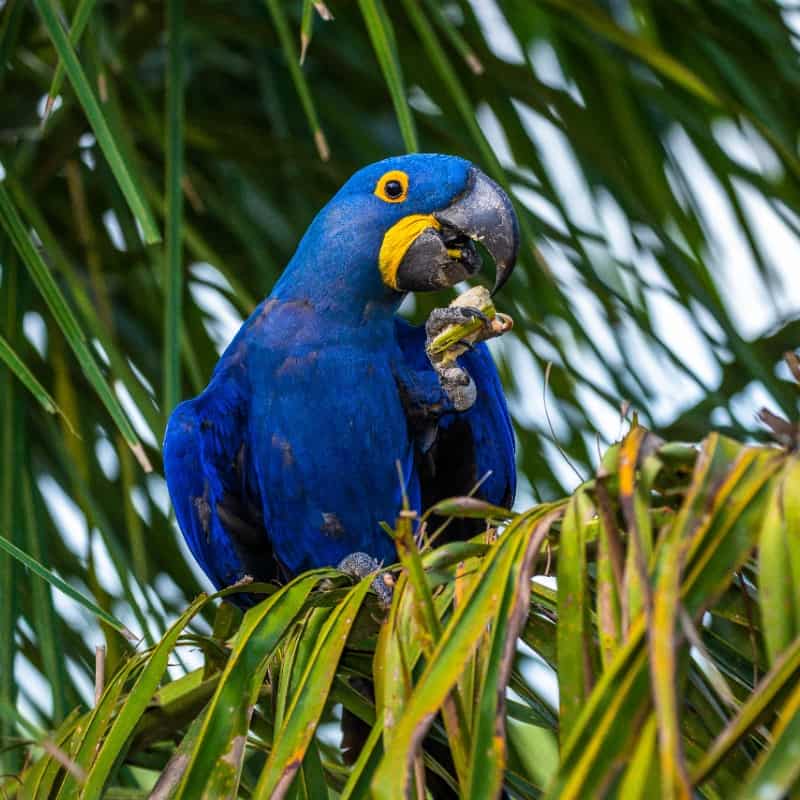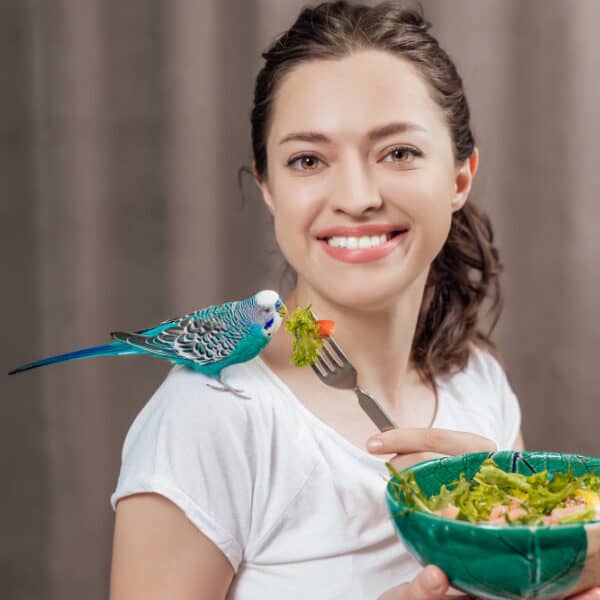Last Updated on by Mitch Rezman
NUTRITION EXPERT PANEL REVIEW:
New rules for feeding pet birds
FEED MANAGEMENT, FEBRUARY 1998, VOLUME 49, NUMBER 2.
Pet food regulators have relied on expert panels on canine and feline nutrition to determine minimum nutrient requirements for dogs and cats. These expert panels also help regulators determine tesing procedures for the nutritional adequacy of pet food. Pet food regulators have created an expert committee for companion and exotic bird nutrition. The panel interest is focused on passerine (song bird, finches, and canaries) and psittacine (parrots, cockatiels, and parrakeets) birds.
Dr. Randal N. Brue, vice president of research and development at Kaytee Products, Inc., is the chair of the expert panel on companion and exotic birds. Other panel members include Dr. Milton Sunde, professor emeritus at the University of Wisconsin; Dr. Sue Crissey, director of the Brookfield Zoo (Chicago) nutrition services; and Mark Hagen, director of Research at Rolf C. Hagen, Inc. Two other nutritionists, Dr. Dick Grau, professor emeritus at the University of California-Davis and Dr. Dwayne Ullray, professor emeritus at Michigan State University, provided input during the formation of the panel.
The companion and exotic bird nutrition expert panel met last November in Chicago. The purpose of the meeting was for members to discuss and develop suggested nutrient profiles for feeding companion and exotic birds. This is required in the process to legally establish the use os a nutritional adequacy claim on companion bird food products. These regulations will help consumers differentiate between array of products—many off which are not “complete”—as well as establish a “benchmark” by which dietary performance can be measured by the veterinary and avicultural community.
During the meeting the panel addressed the following issues:
Applicable diet types: Considering the complications involved in setting a nutritional profile for a supplemented seed-based diet, for example, ingredient preference and ingredient separation, the panel agreed to focus on profiles for processed, nutritionally homogenous feed.
Profile categories: The panel agreed that, based on the minimal depth of information on this topic, only the development of “maintenance” profiles was prudent. This forced the panel to state only generalized profiles—a single maintenance profile for the entire category of specified birds. Therefore, a general maintenance profile was developed for all companion psittacines (regardless of size or genus) and a maintenance profile for all companion, graniverous passerines. This is a logical first step for what is, by definition, a process of refinement based on increased amounts of clinical and research-based data.
Profile reviews: Because it is recognized that this effort is the initial step of a long-term commitment to elucidate and communicate the nutritional needs of companion birds, this group, or its successors should continue to meet every 2-3 years to evaluate the performance of the proiles, discuss new research and group information, review anecdotal information of profile performance via Association of Avian Veterinarians (AAV), and develop more specific criteria.
Nutrient recommendations
The panel also developed nutrient profiles for psittacine and passerine birds (Table 1). These nutrient recommendations are conservative. The recommendations are bassed on extrapolations from the National Research Council (NRC) requirements for poultry and the research and formulation experiences of the panel members. Generally, when the panel used NRC data, it chose the highest concentrations for incorporation into the companion bird profile, except when the highest concentration was specific for a particular species or breed.
There are a number of obstacles to developing meaningful nutrient recommendations for pet birds. One of the biggest is the availability of accurate nutrient values. Nutritionists and feed formulators know the metabolizable energy content of corn, soybean mela, and other commen ingredients for chickens, turkeys, swine, and cattle. However, these values may not be applicable for ingredients in pet bird feeds. The digestion efficiencies of commercial livestock and poultry may be different fro those of companion and exotic birds. Metabolizable energy values obtained from feeding trials using pet birds are lacking. Also, the metabolizable energy content of many of the special ingedients used in pet bird feed is unknown.
The panel decided to use gross energy rather than metabolizable energy as the criteria for measuring the energy content of pet bird feed. The expert panel recognized the limitations of gross energy. However, the simplicity of measurement— from both a regulatory and commercia lstandpoint—makes gross energy a desirable measurement. The panel recommended a range of gross energy values to insure that acceptable ranges of the nutrient-to-energy ratios are maintained. The total energy or fat content of a specific diet should be that which is required to maintain optimal weight in the target species. Metabolizable energy values will be substitued for gross energy values as they become available.
The panel members agreed that, because they included key amino acids in the nutritional profile, the crude protin concentration could be fairly low. Indeed, there was considerable observation and data by panel members with experience maintaining common companion species on diets consisting of 12-15% crude protein in long-term feeding situations.
Due to the difficulty in analyzing available, non-phytate phosphorus in ingredients, the expert panel elected to specify total dietary phosphorus. As a consequence, the panel recommended a calcium-to-phosphorus ratio of between 1:1 and 2:1.
Total vitamin A activity (vitamin A plus-carotene) was selected as the preferred measurement to acknowledge the dietary contributions of provitamin A compunds.
What is next?
The expert panel on the nutrition of companion and exotic birds plans to ask the AAV’s Nutrition and Management Committee to review its nutritent profiles. The panel is also seeking input from the AAV’s Board of Directors regarding protocol studies and general comments by the members on profiles and recommendations.
After AAV comments have been intergrated into the panel’s recommendations, the panel will issue a final document to the American Association of Feed Control Officials (AAFCO). The AAFCO Pet Food Committee will then review and make its recommendations to its Board of Directors.
At the appropriate time, a committee report including the nutrient profiles and the applicable rationale or logic of the specific recommendations will be submitted for publication to constitute the specific reference for citation.
The nutrient recommendations for companion and exotic birds will aid veterinarians, consumers, and bird feed manufacturers in decreasing the mortality and morbidity associated with poor nutrition and unsound feeding practices.
| Pet Bird Profiles Table 1. Nutrients profile recommendations for companion and exotic birds. |
||||
| Psitacine | Passerines | |||
| Minimum | Maximum | Minimum | Maximum | |
| Gross energy, kcal/kg | 3200 | 4200 | 3500 | 4500 |
| Total protein, % | 12 | 14 | ||
| Unoleic acid, % | 1 | 1 | ||
| Amino Acids: | ||||
| Arginine, % | .65 | .75 | ||
| Lysine, % | .65 | .75 | ||
| Methionine, % | .30 | .35 | ||
| Methionine + cystine, % | .50 | .58 | ||
| Threonine, % | .40 | .46 | ||
| Vitamins: | ||||
| Vitamin A activity 9total), IU/kg | 8000 | 8000 | ||
| Vitamin D3, ICU/kg | 500 | 2000 | 1000 | 2500 |
| Vitamin E, ppm | 50 | 50 | ||
| Vitamin K, ppm | 1 | 1 | ||
| Biotin, ppm | .25 | 0.25 | ||
| Chloine, ppm | 1500 | 1500 | ||
| Folic acid, ppm | 1.5 | 1.5 | ||
| Niacin, ppm | 50 | 50 | ||
| Pantothenic acid, ppm | 20 | 20 | ||
| Pyridoxine, ppm | 6 | 6 | ||
| Riboflavin, ppm | 6 | 6 | ||
| Thiamine, ppm | 4 | 4 | ||
| Vitamin B12, ppm | 0.1 | 0.01 | ||
| Minerals: | ||||
| Calcium, % | 0.30 | 1.20 | 0.50 | 1.20 |
| Phosphorus, % | 0.30 | 0.50 | ||
| Calcium: total phosphorus | 1:1 | 2:1 | 1:1 | 2:1 |
| Chlorine, % | 0.12 | 0.12 | ||
| Magnesium, ppm | 600 | 600 | ||
| Potassium, % | 0.40 | 0.40 | ||
| Sodium, % | 0.12 | 0.12 | ||
| Trace minerals: | ||||
| Copper, ppm | 8 | 8 | ||
| Iodine, ppm | 0.40 | 0.40 | ||
| Iron, ppm | 80 | 80 | ||
| Manganese, ppm | 65 | 65 | ||
| Selenium, ppm | 0.10 | 0.10 | ||
| Zinc, ppm | 50 | 50 | ||
FEED MANAGEMENT, FEBRUARY 1998, VOLUME 49, NUMBER 2.
Author Profile

Latest entries
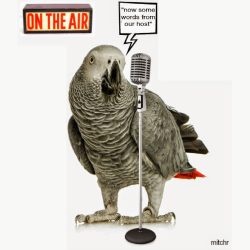 Bird & Parrot CareJune 20, 2025Understanding the Best Way to Use Prevue Pets Mimic Me Voice Trainer
Bird & Parrot CareJune 20, 2025Understanding the Best Way to Use Prevue Pets Mimic Me Voice Trainer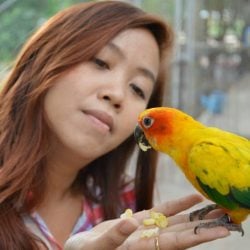 Bird BehaviorJune 6, 2025How Do I Keep My Parrot From Dumping His Food Every Day?
Bird BehaviorJune 6, 2025How Do I Keep My Parrot From Dumping His Food Every Day?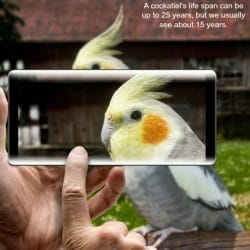 Birds & LightingMay 16, 2025I Am Seeking Clarity About Lighting for My Birds Cage
Birds & LightingMay 16, 2025I Am Seeking Clarity About Lighting for My Birds Cage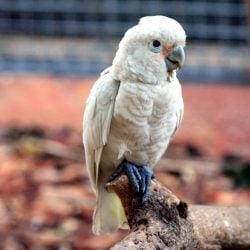 Bird RescueApril 29, 2025How Do We Re-Home a 17 yr Goffin Cockatoo?
Bird RescueApril 29, 2025How Do We Re-Home a 17 yr Goffin Cockatoo?
